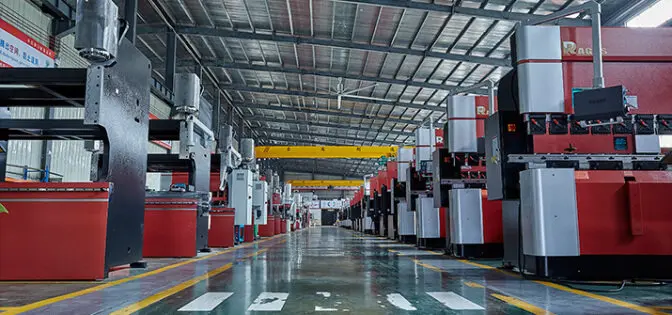会社概要
Anyang Younengde Electric Co。、Ltdは、 DCプラズマ融解装置、高出力DC電源、固形廃棄物/危険廃棄物非毒性処理装置の研究開発、設計、製造、設置、および試運転に特化したハイテク企業です。 。当社は、 DCプラズマ融解装置に関する35の新しい実用的な技術特許を取得しています。機器容量は50kvaから30000kvaです。生鉱石、触媒、工業用の固形廃棄物から希少で貴重な金属を抽出して濃縮するプロセスは、高収量で成熟しています。メタリックシリコンと75#フェロシリコンの収量は、シリカの製錬において高くなっています。廃棄回路基板が直接溶けた場合、非鉄金属の回収率は高くなります。カルシウムアルミン酸塩の製錬プロセスは成熟しています。当社は、国内外の多くの企業やユニットとの専門的な協力と技術交流を実施し、高品質の製品を提供しています。製品ケースリスト 中国科学アカデミーの整備士(技術サービス協力)蘇州研究所の研究所(技術サービス協力) Anyang Longxin Silicon Industry Co.、Ltd( M Etallic Silicon Powder Remalting DC Furnace) Hubei Boxin New Materials Technology Co.、Ltd (メタリックシリコン製錬DC炉) Danjiangkou huiyuan hejin Co.、Ltd(メタリックシリコン製錬DC炉)北京セントラルアイアン&スチールリサーチインスティテュート(スチール炉) Dalian Wilte Steel Co.、Ltd(Vanadium Titanium Iron Experimental DC Furnace) Henan Liyuan Group Co.、Ltd (Ferroalloy Furnace) Wu'an Yuhua Steel Group Co.、Ltd (スチールアルミニウム合金DC炉) Tangshan Ganglu Steel Group Co.、Ltd (スチールアルミニウム合金DC炉) Heil Ongjiang Jianghui Huanbao Technology、Ltd( Ferronickel Alloy DC Furnace) Guangdong Guangqing Jinshu Technology Co.、Ltd( Ferronickel Alloy DC Furnace)河南省ズー氏( M Ulti機能DC炉) Rizhao Zhenghong Yanchuang New Materials Co.、Ltd(Ferronickel Alloy DC Furnace) Fujian Anxi Ansheng Mining Co.、Ltd( M Ulti-Function DC Furnace) liaoyangshi taizih qui boyi zhuzaochang(廃棄物亜鉛dc炉) Chongqing Saiyadi Energy Technology Co.、Ltd (Red Mud Ironmaking DC Furnace) liaoning fuyun耐火株式会社(カルシウムアルミナートDC炉) Huolinguole Gerun Huanbao Technology Co.、Ltd (Calcium aluminate DC炉) Huolinguole Lifenglvye Co.、Ltd(カルシウムアルミナートDC炉) Dalian Yishun LVSE Technology Co.、Ltd (Calcium aluminate DC炉) Danjiangkoushi Wanji Abrasive Materials Co.、Ltd (Corundum DC Furnace ) Jiangsu nantong teynocel Co.、Ltd (ベリリウム銅合金DC炉) Jiangsu nantong teynocel Co.、Ltd (ベリリウム銅合金DC炉)インドネシアPt Metalindo Makmur Mandiri (テストDC炉) Korea HF Metal Trade Co。、Ltd (PCB DC Furnace)広東造母氏フー氏(PCB DC炉) Guizhou Yixiang Kuangye(グループ)Zhenyuan Runda Co.、Ltd(貴金属DC炉) Guangxi Zhongwu Kuangye Co.、Ltd(貴金属DC炉) Longyan Changyu New Material Technology Co.、Ltd(貴金属DC炉) Hubei Huanggang Zhao氏(貴金属DC炉) Henan Yihui Jinshu Technology Co.、Ltd ( Three Way Catalytic Shelting DC Furnace ) Shanghai Yudun Xincailiao Technology Co.、Ltd(Three Way Catalytic Shelting DC Furnace ) Zhejiang Qike Shengwu Technology Co.、Ltd(Three Way Catalytic Shelting DC Furnace ) Zhejiang Metallurgical Research Institute (Three Way触媒製錬DC炉) Hubei Zhongyuan Chucheng Environmental Protection Technology Co.、Ltd (Three Way Catalytic Shelting DC Furnace ) Huaian Zhongun Environmental Protection Technology Co.、Ltd (3ウェイ触媒製錬DC炉の2セット) M Inshan Huanneng Hi-Tech Gufen Co.、Ltd(Lead亜鉛鉱石テストDC炉) Zhejiang Teli Renewable Resources Co.、Ltd(銅スラッジ回復DC炉) Keyuan Environmental Equipment Co.、Ltd (危険な廃棄物処理DC炉) Guanyinshan廃棄物焼却ステーション( Ash Harbless Dispural DC Furnace ) Chaozhou Dongsheng Environmental Protection Technology Co.、Ltd ( R ockウールDC炉) Yongxing Ch Ang Long Environmental Protection Technology Co.、Ltd (Tin Slag Shelting and Recycling DC Furnace) Kunming Dingbang Technology Co.、Ltd ( SMELTING DC Furnace)











